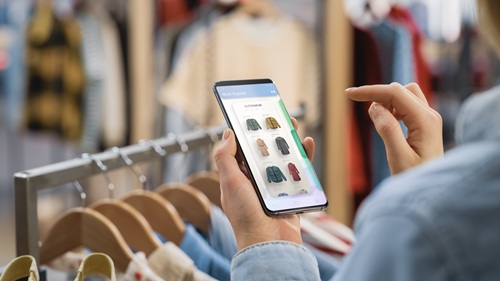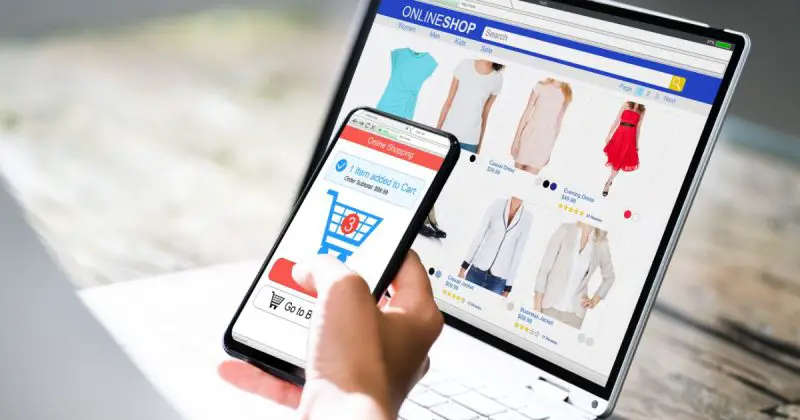The retail landscape has changed dramatically in recent years, and 2025 is shaping up to be yet another pivotal year in the world of e-commerce. As the lines between physical and digital shopping continue to blur, one trend remains clear: online shopping is no longer just an option—it’s the new norm.
While browser websites still hold relevance, shopping apps have taken the spotlight thanks to their speed, personalization, and ease of use. With the increasing dominance of smartphones, consumers now demand intuitive, lightning-fast, and highly tailored shopping experiences that desktop browsers offer, but mobile browsers often struggle to provide. This is where dedicated shopping apps shine.
In this article, we’ll explore why shopping apps are increasingly being favored over standard website browsing and how they elevate the customer experience, boost engagement, and ultimately drive conversions. Whether you’re a tech-savvy consumer or a business owner trying to decide where to invest your digital resources, understanding the advantages of shopping apps in today’s market is essential.
1. Mobile Usage Has Overtaken Desktop—And It’s Not Slowing Down
As of 2025, mobile devices account for more than 70% of all e-commerce traffic, and this figure continues to rise annually. According to Statista, global mobile e-commerce sales are expected to surpass $4.5 trillion USD by the end of 2025, making mobile the dominant platform for online shopping.
Why does this matter? Shopping apps are purpose-built for mobile experiences, unlike mobile websites, which are often just scaled-down versions of desktop sites. Apps provide a streamlined, user-centric experience that fits modern consumers’ habits—shopping on the go, during commutes, or even while multitasking at home.

Key Fact:
🔹 Statista predicts that by the end of 2025, over 187 million consumers in the U.S. alone will shop via mobile apps regularly.
Source: Statista Mobile Commerce Forecast 2025
2. Enhanced Personalization for a Tailored Experience
One of the biggest advantages shopping apps offer is deep personalization. From the moment a user downloads and opens an app, they can set preferences for language, interests, and shopping categories. The app begins learning from their behavior—what they search for, what they click on, what they buy—and tailors the experience accordingly.
Apps can:
-
Suggest products based on browsing history
-
Recommend items similar to previous purchases
-
Adjust promotions to match the user’s interests or location
-
Offer early access to sales or exclusive deals for loyal users
This level of personalization builds customer loyalty, encourages repeat visits, and significantly improves conversion rates.
Real-World Example:
🛍️ Amazon’s shopping app leverages AI and machine learning to deliver product suggestions that feel remarkably intuitive, helping it maintain a 74% mobile market share in the U.S.
3. Instant, Targeted Push Notifications
Another standout benefit of shopping apps is the ability to send push notifications—small, clickable messages sent directly to a user’s device. Unlike email marketing, push notifications have an open rate as high as 90%, according to Business of Apps.

Apps allow you to:
-
Notify users of flash sales or time-limited discounts
-
Remind them of abandoned carts
-
Provide order updates in real time
-
Send personalized birthday offers or loyalty rewards
These alerts can be geo-targeted, meaning businesses can send location-specific deals (e.g., a sale at a store nearby), increasing both relevance and impact.
Pro Tip:
🔔 Don’t overdo it—users may uninstall your app if notifications feel spammy. Striking a balance between helpful and annoying is key.
4. Seamless Integration With Mobile Features
Unlike websites, shopping apps can fully utilize mobile device features such as:
-
Camera: For scanning barcodes or uploading photos
-
GPS: To suggest local stores, calculate shipping costs, or offer location-based promotions
-
Biometric Authentication: Face ID or fingerprint login for quick and secure checkout
-
Contacts & Messaging: To enable social shopping, gift-giving, or refer-a-friend features
These integrations create smoother and more intuitive experiences that make shopping quicker and more enjoyable. For example, fashion apps like Zara and ASOS allow users to take a photo of an outfit and get suggestions for similar items available in their catalog.
5. Offline Access Capabilities
While most shopping experiences rely on internet connectivity, mobile apps can still offer partial offline functionality. This includes:
-
Browsing previously loaded product catalogs
-
Adding items to wish lists or carts
-
Reading saved product reviews or guides
-
Filling forms or orders that sync once back online
This makes apps particularly valuable in areas with unreliable internet connections, allowing users to continue browsing and shopping without interruption.
6. Superior Speed and Performance
Speed is everything in the digital age. According to Google, 53% of users abandon mobile websites if they take more than three seconds to load. Shopping apps, on the other hand, typically load 1.5x faster than mobile websites because they store data locally and aren’t restricted by browser limitations.
Benefits of app speed include:
-
Faster product browsing
-
Smoother image loading
-
Quick checkout processes
-
Fewer crashes and bugs compared to mobile sites
This results in a lower bounce rate and higher conversion rate, which is why many top-tier retailers prioritize app development over mobile site enhancements.
7. Greater Creative and Interactive Freedom
Despite continuous improvements in mobile web technology, websites are still subject to the limitations of browsers. Apps, however, offer much more creative freedom for developers and designers. This means better animations, smoother transitions, and interactive features like:
-
Swipeable product galleries
-
Drag-and-drop outfit planners
-
AR try-on tools (e.g., virtual furniture placement or makeup testing)
-
In-app games that earn discounts or loyalty points
These innovations help brands connect with younger audiences who crave engaging and immersive digital experiences.
8. Higher User Retention and Brand Loyalty
Apps create a more direct, continuous relationship with the customer. When a user installs your app, it becomes part of their digital lifestyle—occupying space on their phone and in their mind.
What helps retention?
-
Personalized loyalty programs
-
Points, rewards, and gamification
-
Exclusive content or early access deals
-
Smooth customer service integrations (live chat, order tracking)
According to Adobe, app users are 2x more likely to return to a brand’s platform within 30 days than mobile web users. This is a critical factor in building long-term brand loyalty.
9. Secure and Streamlined Payments
Shopping apps often support multiple payment gateways like Apple Pay, Google Wallet, PayPal, and Buy Now Pay Later (BNPL) options such as Klarna and Afterpay. These integrations are seamless, secure, and fast—eliminating the friction often associated with checkout forms on mobile websites.
Additional security features in apps:
-
Encrypted user data
-
Face/fingerprint authentication
-
Instant payment confirmations
This gives users greater peace of mind and speeds up the overall purchase journey, reducing cart abandonment rates.
10. Rich Analytics for Businesses
Apps provide businesses with real-time data on user behavior that’s far more detailed than what’s typically available through websites. This includes:
-
Session duration
-
Heat maps of navigation
-
Tap and scroll behavior
-
Purchase paths and drop-off points
These insights allow companies to refine the app experience and tailor promotions more effectively, leading to smarter business decisions and better ROI.
Why Shopping Apps Are the Future of E-commerce
Shopping apps have evolved from a nice-to-have feature into a critical component of a successful retail strategy. They outperform websites in virtually every metric that matters—speed, personalization, engagement, and user retention. In 2025, consumers expect brands to offer mobile apps that enhance their shopping journey, not just replicate the web experience.
As mobile commerce continues to explode, investing in a shopping app isn’t just about keeping up with trends—it’s about delivering the fast, intuitive, and connected experience your audience expects. From offline browsing and instant notifications to personalized content and faster checkout, apps create a shopping environment that’s convenient, enjoyable, and remarkably efficient.
If you’re a shopper, downloading your favorite brand’s app could make your next purchase smoother, smarter, and more satisfying. And if you’re a business owner or marketer, it’s time to go beyond the mobile-friendly website and deliver a mobile-first strategy with a dedicated shopping app.




